
Jeju Island is probably my favorite place in all of Korea. It has everything – ocean, tropical weather, volcanic mountains, amazing food, pretty flowers and even horses that are native to the island (brought in hundreds of years ago). Flavors of Jeju Island include many things but I would have to say their ultra fresh seafood, amazing black pork and sweet mandarin oranges are some that they are best known for. My first visit to Jeju Island was when I was in high school and I just LOVED everything about the island and ESPECIALLY the beautiful open fields with HORSES ❤️… I LOVE horses (I used to ride when I was little) and I told my Dad back then –
“You know.. Dad?? If you can find a man who owns a horse farm here, I would definitely consider marrying him!” HAHAHA…shhh…good thing my husband doesn’t really read my blog…😜
Now, recently my fabulous sister #3 had the opportunity to visit Jeju Island and wrote me this great post about the best restaurants in Jeju.
If you want to know more about Jeju Island – this article by Jeju Weekly has some great photos along with good information.
Anyway, my sister #3 came through for me again. I am so grateful to her for these wonderful articles since I don’t live in Korea anymore… She has traveled all over the world as an interpreter and she is a true foodie so if she says something tastes good, you gotta believe it!! Thank you so much sis!!
Flavors of Jeju Island Day 1, By my sister JY
For several years, I’ve been going to Jeju Island every April to interpret at a conference called the Global Breast Cancer Conference (GBCC). The subject is a bit depressing, but I take on this job because of the venue.
Jeju is a big volcanic island situated off the southern coast of Korea, sort of like Hawaii, but more subdued. It is a beautiful island and was named a UNESCO Natural Heritage Site a few years ago. It used to be a default honeymoon destination before Koreans could afford to go abroad for their honeymoons.
After the first day, we – the four colleagues plus one husband – sought a well-deserved night out at a local restaurant called “Dongerami Shikdang (동그라미 식당).” (translation: Circle Restaurant) This husband is an advertisement producer, climber, gourmet, carpenter and an amateur chef. Go figure. Anyhow, he knows practically ALL the good eateries in the country, and he was our culinary guide during our stay.
The restaurant, located on an obscure back road, was a small place run by a family who also owns a pig farm. A bit cruel if you think about it. The place itself appeared a bit shabby and run-down, but it’s said to be famous among locals. It’s also super cheap, so I decided to dismiss the unsettling décor. I do have to make two comments.
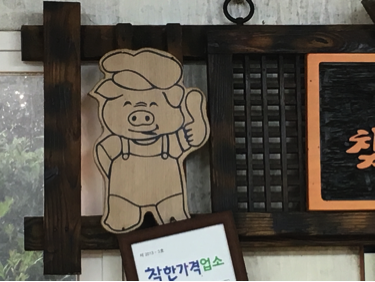
Note the image of the smiling pig giving a thumbs-up. Does the poor animal know what’s happening at this restaurant?

Also note the paper talisman plastered above the entrance door mantle. These are shamanistic good luck charms that supposedly ward off evil spirits and bring good fortune. People pay a fortune to have one custom-written for their household or business. I’ve seen many of them, but never in the image of a pig.
Jeju pork is famous for its taste. Basically, the pig is a different breed. It’s black in color and both the meat and fat are chewy in texture.

As you can see in the photo, it almost looks like a wild boar. The meat is darker than the usual pale pink of ordinary pork. Once you taste this black variety, you can never go back to ordinary pork. It’s sort of like Angus beef versus ordinary beef.
Usually, a grill is placed on top of a live coal fire. In this case, a cast iron pan was used instead. The meat is placed on top of the hot pan.

An important part of Korean barbecue is the deft cutting performance of servers. Although the appearance of large scissors at the table tends to shock foreigners, it is an indispensable part of the experience. Thus, I have attached a video complete with the sizzling sound effect.
There are four cuts of pork you can order. Pork belly (Samgyeopsal 삼겹살), Butt (Mok sal 목살), Neck (Hangjeong Sal 항정살), Boneless picnic (Apdari sal 앞다리살). For more detailed info and diagram on Korean vs US pork cuts, see JJ’s Know your pork cut!! post. We ordered all four. I liked the Apdari sal (boneless picnic) and samgyeopsal (pork belly). Actually they call it Ogyeopsal(5-layerd pork belly) rather than Samgyeopsal(3-layerd pork belly) here. This is because it is more ‘streaky’ than usual which also means there’s less fat.
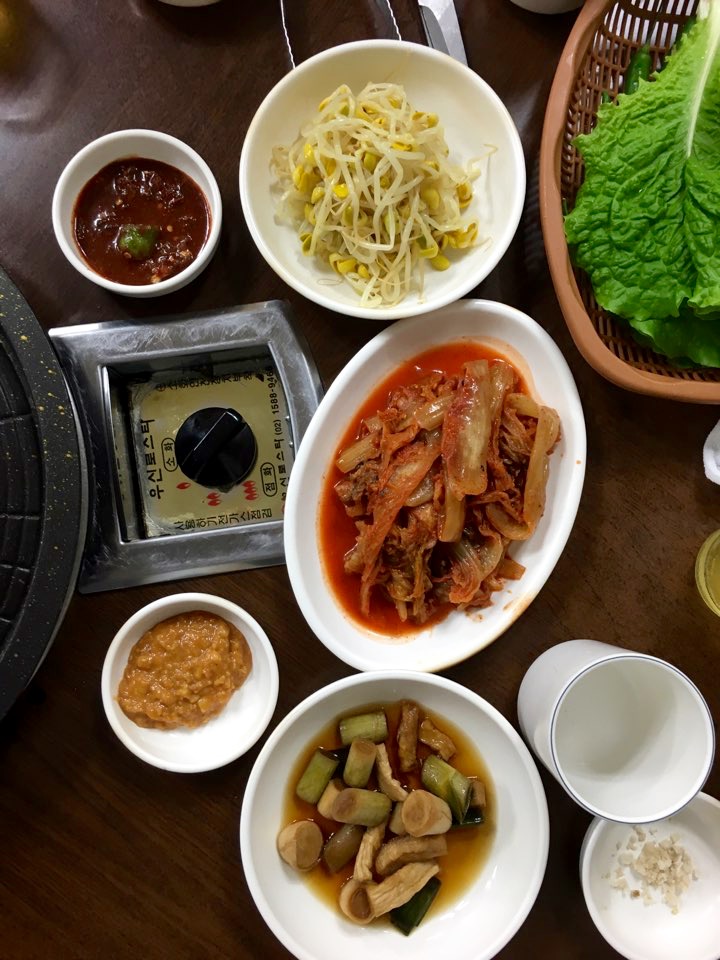
The pork can be eaten wrapped in kimchi, wrapped in lettuce, or dipped in either peppered salt or salted anchovies.
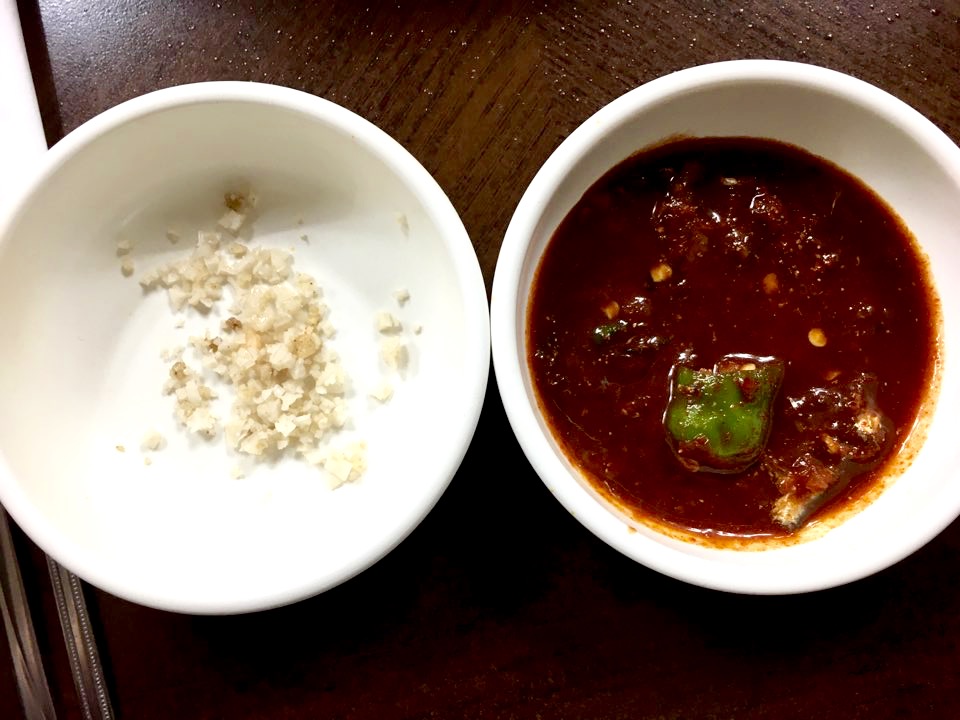
The salted anchovies were so old that it almost looked like soy sauce. It tasted wonderful with the grilled pork.
After we devoured six orders of pork with cold beer, the owner brought out a simmering pot of kimchi jjigae made of really, really sour kimchi. I think their kimchi was at least three years old which is then called Mugeunji (묵은지). But it was good. It also cleansed the mouth of any residual grease.
Although the price on the menu was modest, we had consumed a substantial amount of meat and booze. Fortunately, the husband decided to be chivalrous and picked up the bill. We all thanked him and returned to our hotel feeling very mellow, very happy, and very fat.

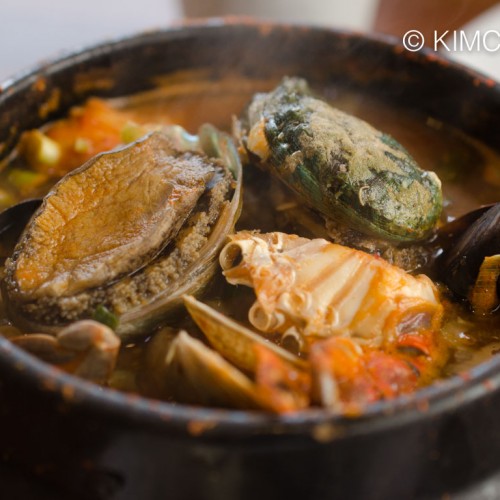
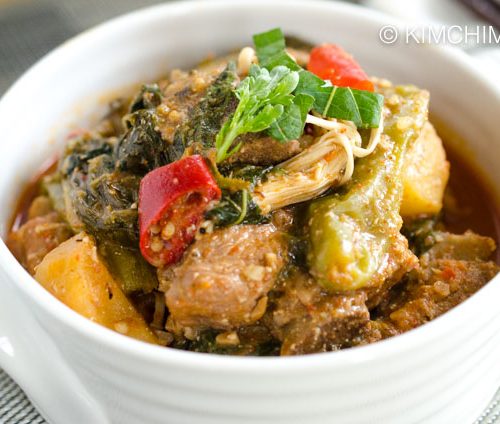
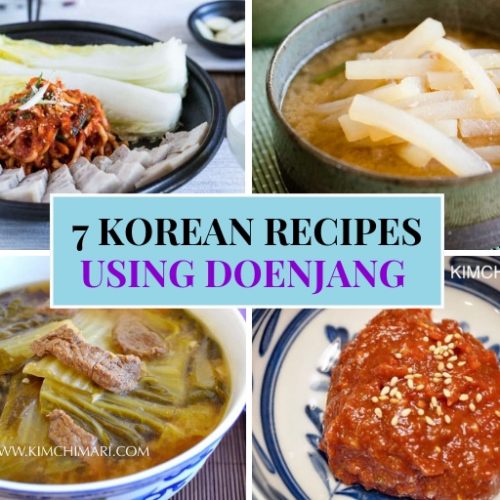

















Hi , can I know the number of this restaurant you went to ? I can’t google it 🙁 wanna go to have a try 🙂
HI Zera, so it took a while for me too because they changed the name. It seems to now call itself 돈델리. Number is 064-739-5433. 217, 1100-ro, Seogwipo-si, Jeju-do. Hope you find it!